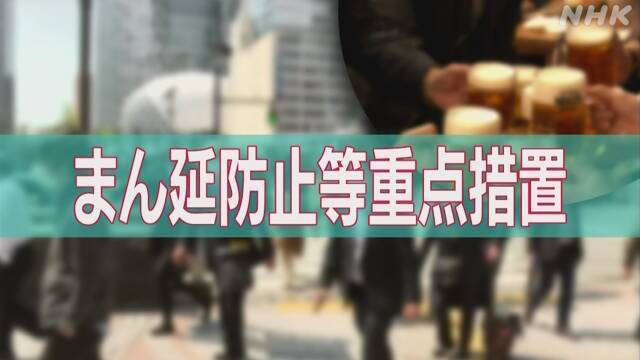A research group such as the National Institute of Infectious Diseases analyzed the effects of the "priority measures such as spread prevention" and the state of emergency issued after April, and found that in Osaka Prefecture, both the priority measures and the declaration were infected. While we were able to confirm the effect on the decrease in the number, we summarized the results that the effect could not be clearly confirmed although the speed of infection spread tended to slow down in Tokyo after the declaration.
Groups such as the National Institute of Infectious Diseases, the University of Tokyo, and Kyoto University have analyzed how quickly the number of infected people has decreased since April when priority measures and declarations were issued.
As a result, an analysis of the 8th to 16th days, when it was expected that the effects would begin to appear after the priority measures and declarations were issued, confirmed that the effects on the reduction in the number of newly infected people were confirmed in Osaka Prefecture. Although there was a tendency for the spread of infection to slow down in Tokyo, the effect could not be clearly confirmed statistically.
In addition, when the research group analyzed how much the "effective reproduction number", which indicates the susceptibility of infection, decreased, among the 16 prefectures to which the priority measures were applied, "1", which tends to converge in one week, was found. Six prefectures fell below the estimate, with an estimated 2% to 19% decrease in effective reproduction.
Of the 10 prefectures where the state of emergency was declared, the number of effective reproductions fell below "1" in one week after the declaration, with an estimated 26% to 39% decrease in 9 prefectures excluding Okinawa, which is important. It is said that the effect was stronger than the measures.
Motoi Suzuki, director of the National Institute of Infectious Diseases Epidemiology Center for Infectious Diseases, who analyzed the difference in effects between Tokyo and Osaka, said, "Tokyo has a high population density and a wide range of living areas. Therefore, there is an element that makes it difficult to control the epidemiology. This time, the rapid spread of infection caused medical strain in Osaka Prefecture, and the information was also transmitted, causing spontaneous behavioral changes, and the number of people decreased and the infection decreased. I can think of it. "

